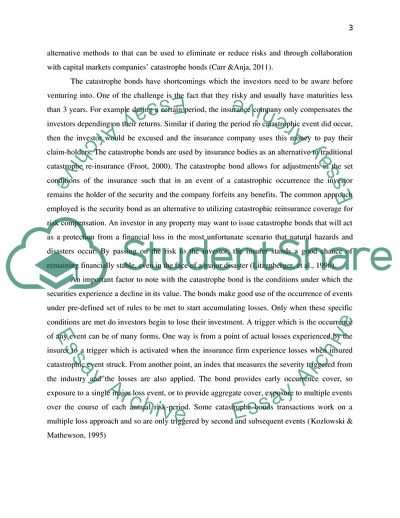Cite this document
(Catastrophe bonds Essay Example | Topics and Well Written Essays - 2000 words, n.d.)
Catastrophe bonds Essay Example | Topics and Well Written Essays - 2000 words. https://studentshare.org/finance-accounting/1827949-catastrophe-bonds
Catastrophe bonds Essay Example | Topics and Well Written Essays - 2000 words. https://studentshare.org/finance-accounting/1827949-catastrophe-bonds
(Catastrophe Bonds Essay Example | Topics and Well Written Essays - 2000 Words)
Catastrophe Bonds Essay Example | Topics and Well Written Essays - 2000 Words. https://studentshare.org/finance-accounting/1827949-catastrophe-bonds.
Catastrophe Bonds Essay Example | Topics and Well Written Essays - 2000 Words. https://studentshare.org/finance-accounting/1827949-catastrophe-bonds.
“Catastrophe Bonds Essay Example | Topics and Well Written Essays - 2000 Words”. https://studentshare.org/finance-accounting/1827949-catastrophe-bonds.


